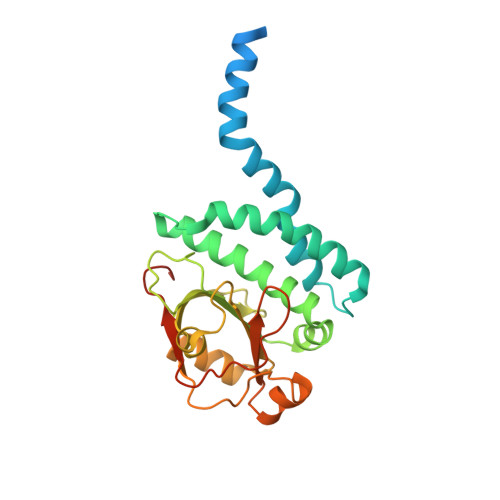BefA, a microbiota-secreted membrane disrupter, disseminates to the pancreas and increases beta cell mass.
Hill, J.H., Massaquoi, M.S., Sweeney, E.G., Wall, E.S., Jahl, P., Bell, R., Kallio, K., Derrick, D., Murtaugh, L.C., Parthasarathy, R., Remington, S.J., Round, J.L., Guillemin, K.(2022) Cell Metab 34: 1779-1791.e9
- PubMed: 36240759
- DOI: https://doi.org/10.1016/j.cmet.2022.09.001
- Primary Citation of Related Structures:
7RFQ - PubMed Abstract:
Microbiome dysbiosis is a feature of diabetes, but how microbial products influence insulin production is poorly understood. We report the mechanism of BefA, a microbiome-derived protein that increases proliferation of insulin-producing β cells during development in gnotobiotic zebrafish and mice. BefA disseminates systemically by multiple anatomic routes to act directly on pancreatic islets. We detail BefA's atomic structure, containing a lipid-binding SYLF domain, and demonstrate that it permeabilizes synthetic liposomes and bacterial membranes. A BefA mutant impaired in membrane disruption fails to expand β cells, whereas the pore-forming host defense protein, Reg3, stimulates β cell proliferation. Our work demonstrates that membrane permeabilization by microbiome-derived and host defense proteins is necessary and sufficient for β cell expansion during pancreas development, potentially connecting microbiome composition with diabetes risk.
- Institute of Molecular Biology, University of Oregon, Eugene, OR 97403, USA; Department of Pathology, Division of Microbiology and Immunology, University of Utah, Salt Lake City, UT 84112, USA.
Organizational Affiliation:

















